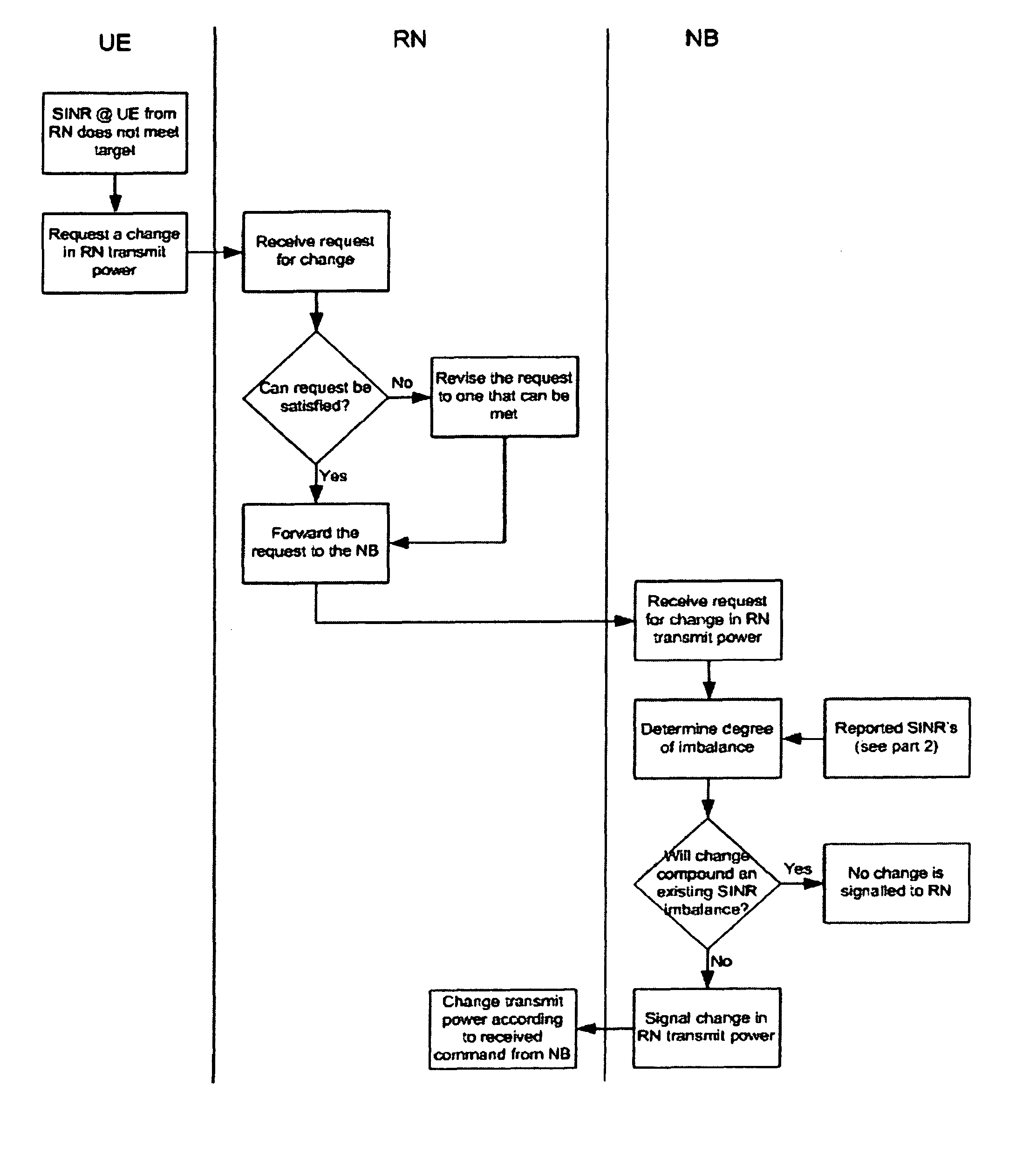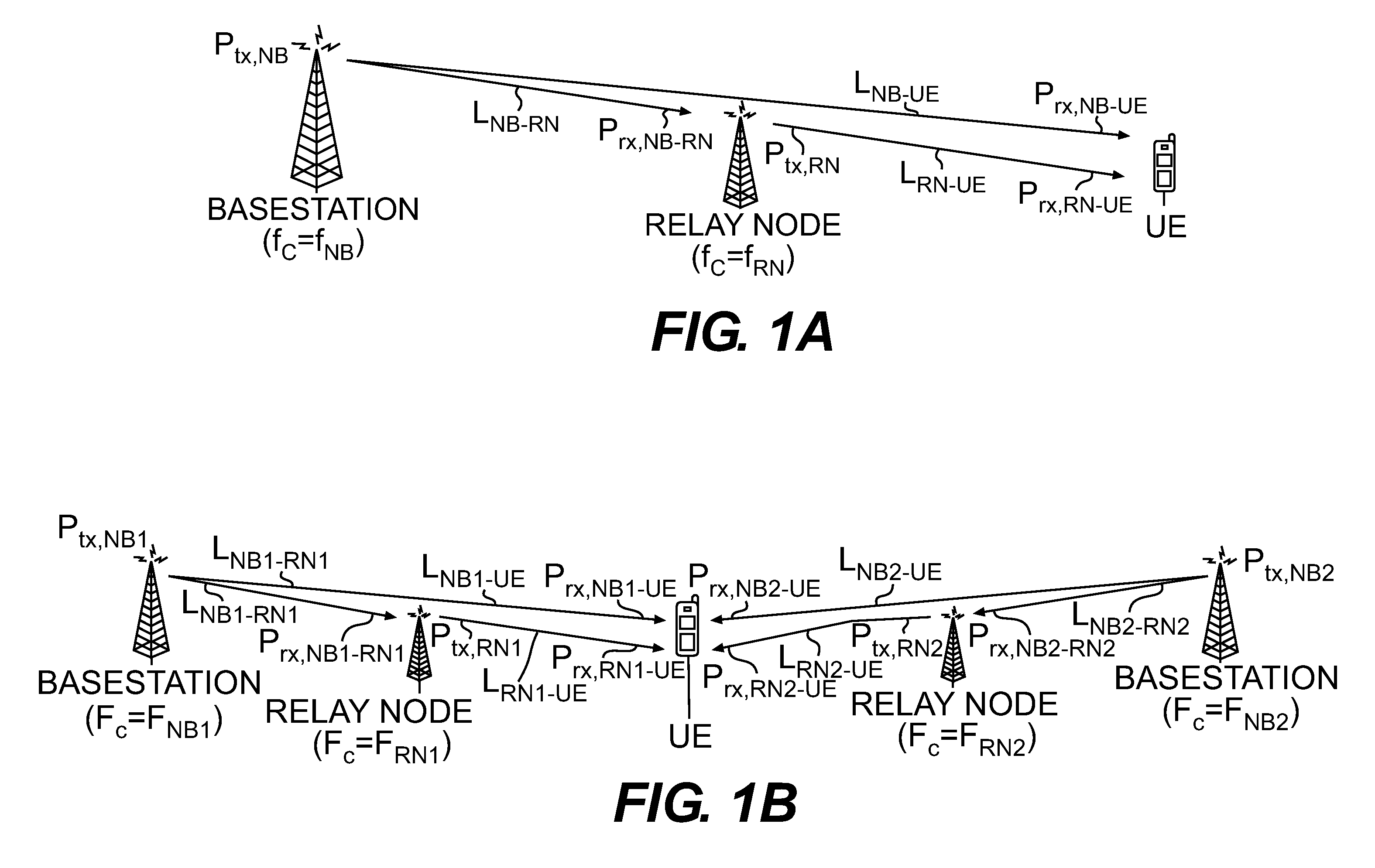Communication system
a communication system and wireless technology, applied in the field of wireless communication systems, can solve the problems of unexpectedly low data gain, weakening of signal strength, unexpectedly poor correspondence between predicted and simulated gain, etc., and achieves low processing cost, simple determination of transmit power, and equal sinr performance
- Summary
- Abstract
- Description
- Claims
- Application Information
AI Technical Summary
Benefits of technology
Problems solved by technology
Method used
Image
Examples
Embodiment Construction
)
[0104]An example of an algorithm which implements an embodiment of the first aspect of the present invention will now be described with reference to FIG. 3 in which the source apparatus comprises a node-B (NB), the intermediate apparatus comprises a relay node (RN) is of the regenerative type, and the destination apparatus comprises a user equipment (UE). The destination user equipment continually monitors the SINR and derives indicators of the SINR and the variation from target SINR.
[0105]The details of the algorithm are summarized as follows:
[0106]
Downlink Algorithm 2: Part 1Trigger: RN receives request for change in RN transmit power from UEAlgorithm InputRequired byOriginRequest for change inNBChange derived in UE, modifiedRN Transmit Powerat RN and signalled toSINR at UE (see part 2)NBSINR at RN (see part 2)NBDestination &Algorithm OutputDerivationSignalling RequirementChange in RNRelativeDerived at UE, checked by RN,transmit powerchangeapproved by NB and actioned byRN
[0107]Th...
PUM
 Login to View More
Login to View More Abstract
Description
Claims
Application Information
 Login to View More
Login to View More - R&D
- Intellectual Property
- Life Sciences
- Materials
- Tech Scout
- Unparalleled Data Quality
- Higher Quality Content
- 60% Fewer Hallucinations
Browse by: Latest US Patents, China's latest patents, Technical Efficacy Thesaurus, Application Domain, Technology Topic, Popular Technical Reports.
© 2025 PatSnap. All rights reserved.Legal|Privacy policy|Modern Slavery Act Transparency Statement|Sitemap|About US| Contact US: help@patsnap.com



